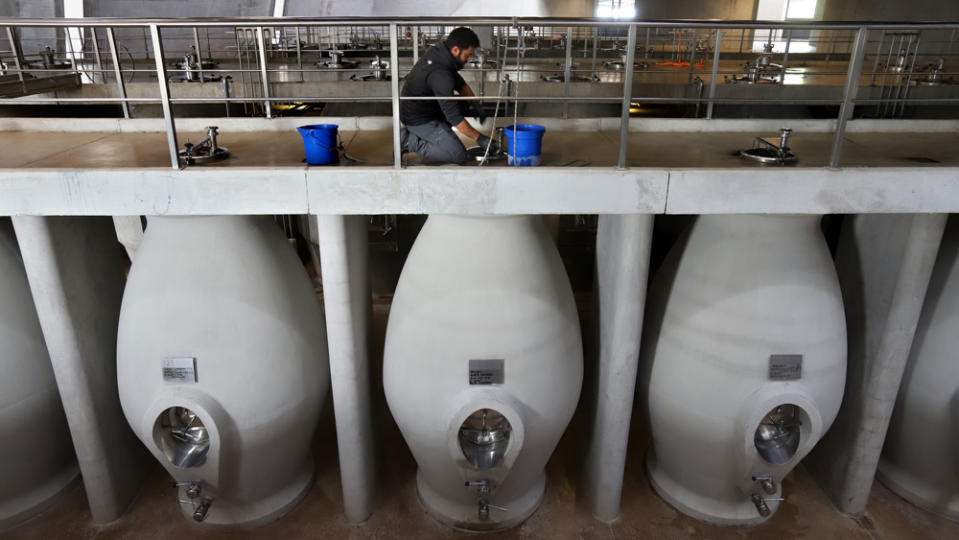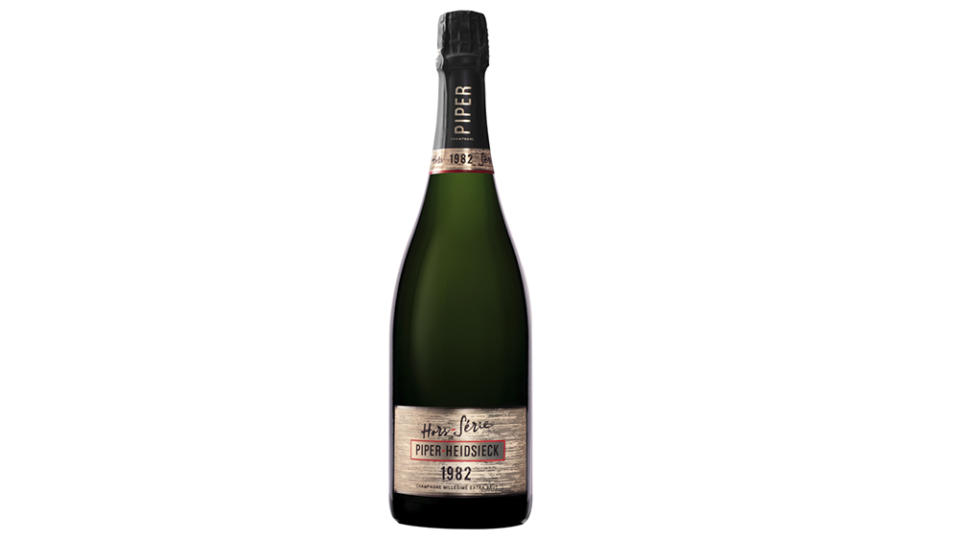Wine Fermentation, Explained: How the Process Affects the Flavor and Texture of Your Vino

Wine has been made by humans for about 7,000 years, and experts agree that until quite recently it may not have tasted very good. For millennia wine has been the ultimate expression of agriculture, but once grapes are transported from the vineyard to the winery it is up to the winemaker to apply his or her hand to create the best beverage possible. While cold fermentation is a relatively new technique, first introduced in the 1950s, many other practices are as old as winemaking itself. A lot of terms are casually tossed around by those in the know, so here is a quick explanation of some of the more common winemaking terms you may come across and how a wine is fermented will affect the final product.
Cold Fermentation
Wine, of course, is made by the process of fermentation: Yeast converts grape sugar to alcohol, and the end result is this glorious liquid we love. One of the byproducts of fermentation is heat, which left unchecked could cause temperatures to rise to the point that yeast dies and fermentation stops. Fermentation at higher temperatures can also create a wine with lighter aromatics, unpleasant flavors, and a lack of elegance or finesse. A colder, slower fermentation preserves aromatics, fruit flavors and color. External cooling jackets or pipes filled with cold running water maintain temperatures within the tank, allowing the winemaker to control the speed of fermentation.
More from Robb Report
Unlike Most Sectors, the Wine Industry Actually Grew During the Pandemic
A Historic Napa Valley Winery Is Now Offering Food and Wine Tastings in Its Underground Cellar
A New Wine Scholarship Aims to Support Industry Professionals Affected by Geopolitical Conflict
Barrel Fermentation

Wine may be fermented in a variety of containers, including stainless steel tanks, concrete vats or “eggs,” fiberglass tanks, terra cotta amphorae, or wooden barrels or vats. While stainless steel, concrete and fiberglass are considered neutral and do not impart flavor or texture to the contents within, fermenting in barrel adds flavor from the wood as well as a buttery or creamy texture. This method leads to a richer mouthfeel and may bring flavors of vanilla, baking spice, coconut or coffee. It can be used for white wines such as Chardonnay or Verdejo as well as red wines like Cabernet Sauvignon, Merlot, Nebbiolo or Tempranillo.
Yolanda García Viadero, proprietor and winemaker at Bodegas Valduero in Ribera del Duero, Spain, began using this technique 12 years ago, in conjunction with external rollers that rotate horizontal barrels during fermentation. She told Robb Report, “For fermentation, wood is interesting. The structure is improved, all the characteristics of the grape are reinforced and amplified. But at the same time the texture and flavor are softer.”
Malolactic Fermentation
Sometimes shortened to just “malo” by winemakers, malolactic fermentation is the conversion of tart malic acid to more creamy or buttery lactic acid. This is easy to remember because “lactic” pertains to milk; a class of bacteria known as lactobacillales are responsible for the conversion. Technically it is not truly fermentation because yeast isn’t involved. It lowers acidity and raises pH, resulting in wines that are described as rounder, smoother or fuller. It can occur spontaneously during primary fermentation or after the first fermentation is complete. Many red wines and some white wines such as Chardonnay, Viognier or Soave undergo malolactic conversion, which adds stability to wines but may decrease the sense of freshness.
At Bodegas José Pariente in Rueda, Spain, winemaker Martina Prieto Pariente uses malo in her Finca Las Comas wine, a single-vineyard, small batch Verdejo. She explained to Robb Report, “This vineyard tends to maintain a high acidity and therefore also a somewhat higher than normal malic acid content. The partial malolactic conversion in this wine allows us to soften the acidity in addition to providing greater aromatic complexity due to the light notes of butter and cream, respecting the primary aromas as it is partial and not complete. This translates into a wine with more volume, silky texture and depth.”
On the Lees

Although the process sounds highly unattractive, aging on the lees heightens many of the pleasant characters in wine’s aroma, flavor and texture. Admittedly, this step isn’t fermentation itself, but using the byproduct of fermentation to influence the final product. Called sur lie in French and sobre lias in Spanish, this is the practice of allowing wine to remain in contact with dead or spent yeast cells. As fermentation occurs, sediment falls to the bottom of the tank or barrel. The first to sink down are gross lees, consisting of dead yeast, grape skins and yeast cells. Fine lees, which have a sleeker texture and settle to the bottom throughout the fermentation. Lees can be filtered out, but winemakers may also choose to leave them in to provide more complexity to the finished wine.
This method is always used for Champagne; non-vintage Champagne is required to spend at least 12 months on the lees, while vintage Champagne must remain in contact with the lees for minimum three years. This can add aromas and flavors of almonds, hazelnuts, baking bread, brioche and toast. Many other wines, whether white, red or rosé are also aged in this way.
“The process of aging Chardonnay on the lees adds complexity, both in the secondary aromas and flavors that it adds to the wines and what it delivers in texture,” Graham Weerts, winemaker for South Africa’s Capensis told Robb Report, “Chardonnay can be subtle in its primary fruit characters, but it’s one of the few white varieties that gains complexity through its evolution over time. The intent for Capensis has always been to produce wines that rival the best white wines in the world in terms of quality and longevity, and lees aging is a fundamental part of the approach.”
Best of Robb Report
Why a Heritage Turkey Is the Best Thanksgiving Bird—and How to Get One
The Ultimate Guide to Wagyu Beef, the World's Most Luxurious Steak
Sign up for Robb Report's Newsletter. For the latest news, follow us on Facebook, Twitter, and Instagram.

